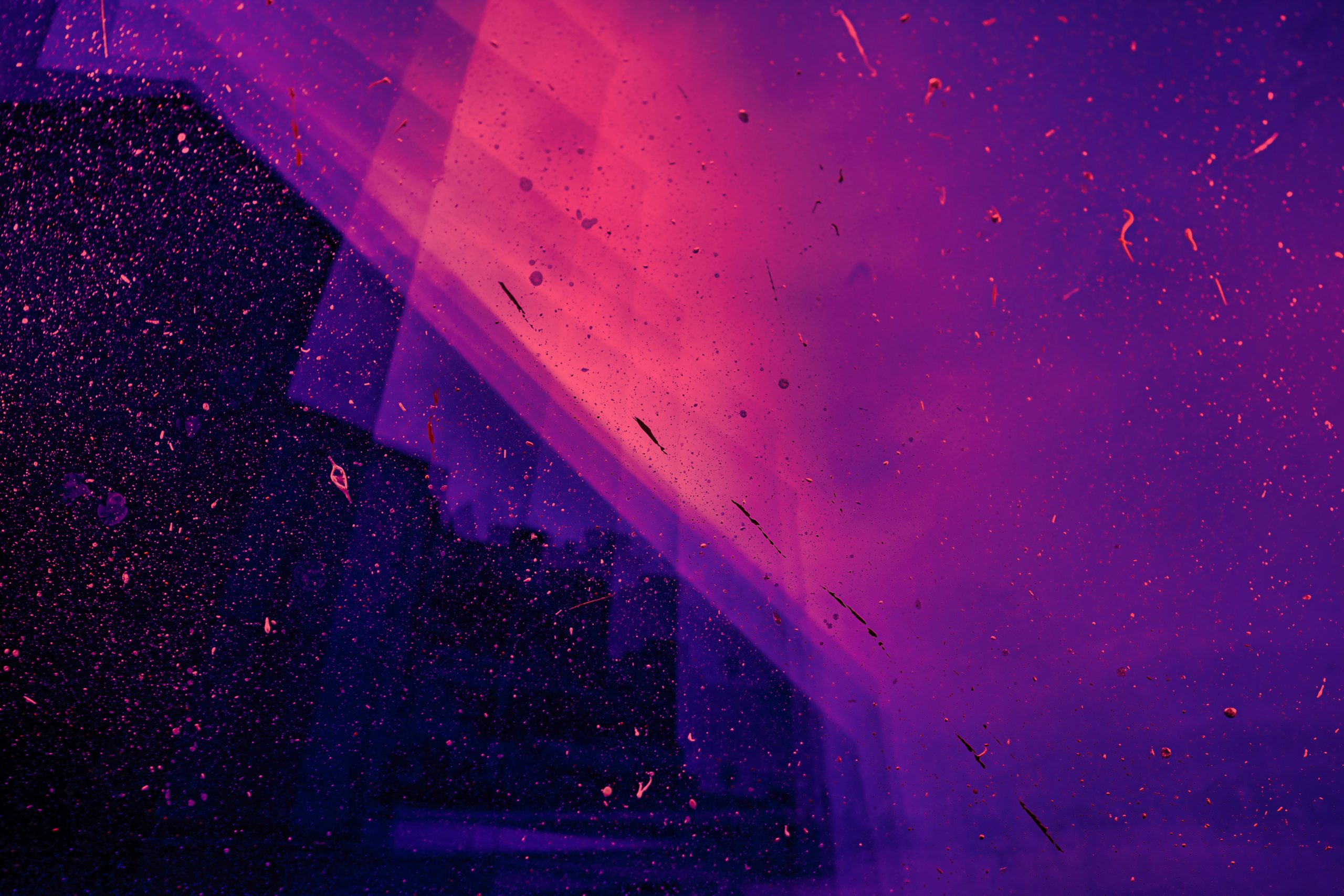Behind Hollywood Blockbusters: Making of Your Favorite Films

Looking for more amazing products? Check out our online store and explore our collection here! Happy shopping!
Before diving in, please note: This post is for informational purposes only. If you’d like to know more about how we approach topics, feel free to check out our friendly Disclaimer Page.
Hey there, amazing readers! 
We’re committed to delivering quality posts, and your support (even just sticking around despite the ads) means everything to us. So, bear with us, and thanks for helping us keep the good vibes rolling. Now, on to the fun stuff!
TRANSLATE BUTTON AT THE END OF THE ARTICLE
A Quick Overview
Behind every Hollywood blockbuster lies a fascinating journey of creativity, teamwork, and innovation.
The process of making a film involves a multitude of moving parts, from storyboarding and casting to production and post-production.
In this article, we’ll delve into the intricate world of filmmaking, exploring how your favorite films come to life on the big screen.
Join us as we unravel the secrets of the film industry and discover the magic behind the scenes of blockbuster movies.
The Art of Storyboarding: Mapping Out Film Scenes
Storyboarding is a crucial step in the filmmaking process, where directors and cinematographers visually map out each scene of the film.
By creating detailed sketches or digital renderings, filmmakers can plan camera angles, shot compositions, and overall visual aesthetics.
Storyboards serve as a blueprint for the entire production team, ensuring that everyone is on the same page before filming begins.
This meticulous planning helps streamline the filming process and ensures that the director’s vision is brought to life on screen.
In addition to mapping out individual scenes, storyboarding also allows filmmakers to visualize the flow of the entire film.
By arranging storyboards in sequence, directors can see how each shot transitions into the next, creating a cohesive narrative structure.
This process is essential for maintaining continuity and pacing throughout the film.
Furthermore, storyboards can help filmmakers experiment with different visual styles and techniques, adding depth and complexity to the storytelling.
Storyboarding is not just about drawing pretty pictures; it’s a strategic tool that helps filmmakers communicate their vision to the rest of the production team.
By providing a visual reference for each shot, storyboard artists help set designers, cinematographers, and visual effects artists understand the director’s intentions.
This collaborative approach ensures that everyone is working towards a common goal, creating a unified visual language for the film.
Ultimately, storyboarding is the first step in bringing a filmmaker’s vision to life on the big screen.
Casting Call: Finding the Perfect Actors for the Role
The casting process is a critical component of filmmaking, as the right actors can make or break a film.
Casting directors are tasked with finding the perfect talent to bring the characters to life, ensuring that each role is portrayed authentically and convincingly.
Through auditions, screen tests, and callbacks, casting directors carefully evaluate actors’ performances to determine who best fits the vision of the film.
This meticulous process is essential for creating believable characters and engaging performances.
Finding the right actors for a film involves more than just talent; it also requires an understanding of the characters and their motivations.
Casting directors must consider factors such as age, ethnicity, physical appearance, and chemistry with other cast members when making their decisions.
By casting actors who embody the essence of the characters, filmmakers can create a more immersive and emotionally resonant experience for audiences.
The right casting can elevate a film from good to great, infusing it with depth and authenticity.
In addition to finding the right actors, casting directors also play a crucial role in negotiating contracts, managing schedules, and coordinating talent on set.
They act as liaisons between actors and filmmakers, ensuring smooth communication and collaboration throughout the production process.
By fostering a positive working environment and addressing any concerns or conflicts that may arise, casting directors help maintain harmony on set, allowing actors to focus on delivering their best performances.
Ultimately, the casting process is a delicate balance of art and logistics, where the perfect actor can transform a film into a masterpiece.
Lights, Camera, Action: The Filming Process Begins
Once the storyboarding and casting are complete, it’s time to roll camera and bring the film to life.
The filming process involves a complex dance of creativity, technology, and logistics, as the production team works together to capture each scene with precision and artistry.
From setting up lights and cameras to directing actors and coordinating stunts, every aspect of filmmaking must come together seamlessly to create a cohesive and compelling narrative.
On set, the director takes the helm, guiding the cast and crew through each shot and scene.
With a clear vision in mind, the director communicates their expectations to the actors, cinematographer, and other key crew members, ensuring that everyone is working towards the same goal.
By providing feedback, encouragement, and direction, the director sets the tone for the entire production, inspiring creativity and collaboration among the team.
Behind the scenes, the cinematographer plays a crucial role in capturing the visual essence of the film.
Through careful framing, lighting, and camera movement, the cinematographer helps translate the director’s vision into stunning images that convey emotion and storytelling.
By collaborating with the director and other department heads, the cinematographer creates a visual language that enhances the narrative and immerses the audience in the world of the film.
Together, the director and cinematographer form a dynamic duo that brings the film to life one frame at a time.
From Script to Screen: Adapting the Story for Film
Adapting a script for the screen is a delicate art that involves translating words into images and emotions.
Screenwriters, directors, and producers work together to bring the story to life, making creative decisions that enhance the narrative and engage the audience.
Whether it’s condensing dialogue, restructuring scenes, or adding visual elements, the adaptation process requires a keen understanding of storytelling techniques and visual language.
One of the key challenges in adapting a script is maintaining the essence of the story while making it visually compelling.
Screenwriters must strike a balance between staying true to the source material and making creative choices that enhance the film’s cinematic appeal.
By focusing on the core themes, characters, and conflicts of the story, screenwriters can craft a screenplay that captures the spirit of the original work while adding new layers of depth and complexity.
In addition to writing the screenplay, filmmakers must also consider how the story will be translated visually on screen.
This involves making decisions about set design, costume, props, and other visual elements that help bring the world of the film to life.
By working closely with production designers, costume designers, and other creative departments, filmmakers can create a visually stunning and immersive experience for audiences.
The adaptation process is a collaborative effort that requires teamwork, creativity, and a deep appreciation for the art of storytelling.
Creating Movie Magic: Special Effects and CGI
Special effects and CGI (computer-generated imagery) play a crucial role in modern filmmaking, allowing filmmakers to bring fantastical worlds, creatures, and events to life on screen.
From elaborate action sequences to otherworldly landscapes, special effects and CGI enhance the visual spectacle of blockbuster films, immersing audiences in larger-than-life experiences.
By combining practical effects, visual effects, and CGI, filmmakers can create seamless and breathtaking visuals that push the boundaries of imagination.
Practical effects involve using physical props, makeup, and animatronics to create realistic and tangible elements on set.
Whether it’s building elaborate sets, designing intricate costumes, or crafting lifelike creatures, practical effects add a sense of authenticity and depth to the film.
By blending practical effects with digital technology, filmmakers can create a harmonious blend of real-world elements and computer-generated imagery, enhancing the visual impact of the film.
Visual effects artists play a crucial role in creating digital effects that seamlessly integrate with live-action footage.
By using sophisticated software and cutting-edge technology, visual effects artists can manipulate, enhance, and create entire worlds within the confines of a computer screen.
From adding explosions and destruction to altering landscapes and environments, visual effects artists work tirelessly to ensure that every detail is perfect and every effect is believable.
The artistry and skill of visual effects artists underpin the magic of blockbuster films, turning the impossible into reality on screen.
The Soundtrack of Success: Crafting Film Scores
Film scores are an integral part of the movie-watching experience, enhancing emotions, setting the tone, and immersing audiences in the world of the film.
Composers work closely with filmmakers to create original music that complements the visuals, enhances the storytelling, and evokes the desired emotional response from viewers.
By incorporating a diverse range of instruments, melodies, and rhythms, composers can craft a unique sonic landscape that enhances the overall impact of the film.
The process of scoring a film begins with the composer watching rough cuts of the movie to understand the pacing, mood, and emotional beats of each scene.
By analyzing the narrative arc, character development, and thematic elements of the film, composers can tailor their music to enhance the storytelling and evoke specific emotions in the audience.
Whether it’s creating a rousing orchestral theme for an epic battle sequence or a haunting melody for a poignant moment, composers must be versatile and adaptive in their approach.
In addition to composing original music, filmmakers often incorporate pre-existing songs and tracks into their soundtracks to enhance the atmosphere and mood of the film.
By selecting songs that resonate with the themes and emotions of the story, filmmakers can create a more immersive and engaging viewing experience for audiences.
Music has the power to elevate a film beyond its visual elements, creating an emotional connection with viewers that lingers long after the credits roll.
The soundtrack of a film is not just background noise; it’s a vital component of the storytelling process that enriches the cinematic experience.
Set Design and Production: Building Movie Worlds
Set design is a crucial aspect of filmmaking that involves creating immersive and visually stunning environments for the characters to inhabit.
Production designers, art directors, and set decorators work together to bring the world of the film to life, crafting sets that reflect the tone, style, and narrative of the story.
From elaborate period pieces to futuristic sci-fi landscapes, set designers use their creativity and expertise to design sets that transport audiences to another time and place.
The production design process begins with researching the time period, location, and visual style of the film to ensure authenticity and accuracy.
Production designers collaborate closely with the director and cinematographer to create sets that enhance the storytelling and complement the visual aesthetic of the film.
By paying attention to details such as architecture, color palette, and texture, production designers can create a cohesive and immersive world that feels both authentic and fantastical.
Set decorators play a key role in adding the finishing touches to the sets, incorporating props, furniture, and other elements that help bring the environment to life.
By selecting items that reflect the characters’ personalities, interests, and backgrounds, set decorators can add depth and complexity to the sets, making them feel lived-in and realistic.
Whether it’s a cluttered bachelor pad, a lavish ballroom, or a post-apocalyptic wasteland, set decorators use their creativity and ingenuity to transform empty spaces into fully realized worlds that enhance the storytelling.
Editing and Post-Production: Piecing it All Together
Once filming is complete, the real magic of filmmaking happens in the editing room.
Editors work tirelessly to assemble the raw footage into a coherent and compelling narrative, shaping the story, pace, and emotional impact of the film.
Through a series of cuts, transitions, and visual effects, editors transform individual scenes into a seamless and engaging movie that captivates audiences and immerses them in the world of the film.
Editing is not just about trimming footage and stitching scenes together; it’s a creative process that involves making storytelling decisions that enhance the overall impact of the film.
Editors work closely with directors and producers to refine the narrative, create tension, and build emotional arcs that resonate with viewers.
By manipulating pacing, sound, and visual elements, editors can craft a dynamic and engaging viewing experience that keeps audiences on the edge of their seats.
In addition to editing, post-production involves adding visual effects, sound design, and color grading to enhance the visual and auditory impact of the film.
Visual effects artists work to seamlessly integrate CGI and practical effects into the live-action footage, creating a seamless and immersive visual experience.
Sound designers craft intricate soundscapes that enhance the mood and atmosphere of the film, using music, dialogue, and sound effects to create a rich auditory tapestry.
Colorists manipulate the color palette of the film to enhance the mood and tone, creating a visual aesthetic that complements the storytelling and enhances the overall viewing experience.
Marketing and Promotion: Selling the Blockbuster
Marketing and promotion are key components of bringing a blockbuster film to audiences around the world.
From teasers and trailers to posters and press junkets, marketing teams work tirelessly to build hype, generate buzz, and create anticipation for the film’s release.
By strategically positioning the film in the marketplace, targeting specific demographics, and leveraging social media and other promotional channels, marketers can maximize the film’s reach and visibility, ensuring a successful box office debut.
One of the most crucial elements of film marketing is the release strategy, which involves determining the best time, format, and platform for releasing the film to maximize its impact.
Whether it’s a wide theatrical release, a limited platform release, or a simultaneous digital and theatrical release, marketers must carefully consider the audience, competition, and market trends to craft a release strategy that drives ticket sales and builds momentum for the film.
By creating targeted campaigns that resonate with audiences and generate excitement, marketers can ensure that the film makes a splash upon its debut.
In addition to traditional marketing tactics, filmmakers often engage in innovative and creative promotional strategies to generate buzz and excitement for their films.
From viral marketing campaigns to immersive experiences and partnerships with brands, filmmakers are constantly seeking new ways to engage audiences and create a sense of anticipation for their films.
By thinking outside the box and embracing emerging trends in media and technology, filmmakers can create a multi-faceted marketing campaign that resonates with audiences and drives ticket sales.
Marketing and promotion are essential components of the filmmaking process that help ensure a film’s success at the box office and beyond.
The Role of Producers and Directors in Filmmaking
Producers and directors play pivotal roles in the filmmaking process, overseeing every aspect of the production from start to finish.
Producers are responsible for securing financing, hiring key personnel, and managing the budget and schedule of the film.
They work closely with directors, screenwriters, and other creative personnel to ensure that the film stays on track and that the director’s vision is realized on screen.
Producers are also involved in marketing, distribution, and promotion, helping to bring the film to audiences around the world.
Directors are the creative visionaries behind a film, responsible for guiding the cast and crew through every stage of production.
Directors work closely with actors, cinematographers, editors, and other key personnel to bring the script to life, making creative decisions that shape the tone, style, and visual language of the film.
Directors must have a deep understanding of storytelling, visual aesthetics, and performance to effectively communicate their vision to the rest of the production team.
By providing leadership, inspiration, and guidance, directors set the tone for the entire production, ensuring that everyone is working towards a common goal.
Producers and directors must work together closely to navigate the complexities of the filmmaking process, balancing creative vision with logistical considerations.
Producers oversee the business side of production, ensuring that the film stays on budget and schedule, while directors focus on the creative aspects of storytelling, performance, and visual aesthetics.
By collaborating and communicating effectively, producers and directors can create a harmonious and productive working environment that fosters creativity and innovation.
Ultimately, the partnership between producers and directors is essential for the success of a film, as they work together to bring the director’s vision to life on screen.
Budgeting for Success: The Economics of Blockbusters
The economics of blockbuster filmmaking are a complex web of budgets, financing, and revenue streams that determine the financial success of a film.
Producers and studio executives must carefully consider factors such as production costs, marketing expenses, distribution fees, and box office projections when budgeting for a blockbuster film.
By creating detailed financial plans and forecasting potential risks and rewards, producers can mitigate financial risks and maximize the profitability of the film.
Blockbuster films are often high-risk, high-reward ventures that require significant financial investment to produce and market.
From securing financing from investors and studios to negotiating distribution deals and revenue sharing agreements, producers must navigate a complex financial landscape to ensure the film’s success.
By carefully managing budgets, monitoring expenses, and maximizing revenue potential, producers can create a financially viable film that attracts audiences and generates profits for stakeholders.
In addition to production costs, marketing and promotional expenses are a significant component of the budget for blockbuster films.
Marketing teams must create targeted campaigns that reach audiences around the world, generating buzz and excitement for the film’s release.
By strategically allocating resources to various promotional channels, marketers can maximize the film’s visibility and increase ticket sales.
The success of a blockbuster film often hinges on the effectiveness of its marketing campaign, as well as the quality of the film itself.
By investing in high-quality production values, engaging storytelling, and innovative marketing tactics, producers can create a film that resonates with audiences and drives box office success.
Critically Acclaimed: The Impact of Film Reviews
Film reviews play a crucial role in shaping public perception, influencing box office performance, and determining the critical success of a film.
Critics evaluate the quality of a film based on factors such as storytelling, acting, direction, cinematography, and overall entertainment value.
Positive reviews can generate buzz, attract audiences, and boost box office sales, while negative reviews can deter viewers and harm the film’s prospects.
For blockbuster films, critical acclaim can enhance the film’s reputation and contribute to its long-term success, solidifying its place in cinematic history.
The influence of film critics extends beyond box office performance; reviews also impact a film’s chances during awards season.
Acclaimed films are more likely to receive nominations and win prestigious awards, which can further boost their visibility and appeal.
Awards recognition not only validates the creative efforts of the filmmakers but also enhances the film’s legacy, ensuring it remains relevant and celebrated for years to come.
Moreover, film reviews provide valuable feedback for filmmakers, offering insights into what worked well and what could be improved.
Constructive criticism from seasoned critics can help filmmakers refine their craft and elevate the quality of their future projects.
In this way, film reviews contribute to the ongoing evolution of the film industry, fostering a culture of excellence and continuous improvement.
In conclusion, the journey of creating a Hollywood blockbuster is a multifaceted and intricate process that requires collaboration, creativity, and meticulous planning.
From storyboarding and casting to production, post-production, and marketing, every stage of filmmaking plays a vital role in bringing a director’s vision to life.
By understanding the complexities and nuances of the film industry, we can better appreciate the artistry and effort behind the movies we love.
So the next time you watch a blockbuster film, remember the countless hours of hard work and dedication that went into making it a reality.

The Enlightenment Journey is a remarkable collection of writings authored by a distinguished group of experts in the fields of spirituality, new age, and esoteric knowledge.
This anthology features a diverse assembly of well-experienced authors who bring their profound insights and credible perspectives to the forefront.
Each contributor possesses a wealth of knowledge and wisdom, making them authorities in their respective domains.
Together, they offer readers a transformative journey into the realms of spiritual growth, self-discovery, and esoteric enlightenment.
The Enlightenment Journey is a testament to the collective expertise of these luminaries, providing readers with a rich tapestry of ideas and information to illuminate their spiritual path.
Our Diverse Expertise
While our primary focus is on spirituality and esotericism, we are equally passionate about exploring a wide range of other topics and niches 

To ensure we provide the most accurate and valuable insights, we collaborate with trusted experts in their respective domains 
Our blog originally focused on spirituality and metaphysics, but we’ve since expanded to cover a wide range of niches. Don’t worry—we continue to publish a lot of articles on spirituality! Frequently visit our blog to explore our diverse content and stay tuned for more insightful reads.
Hey there, amazing reader! 
Check out our store here and take a peek at some of our featured products below! Thanks for being awesome!










